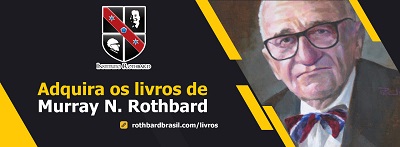Attali, Jacques. 1986. A Man of Influence: Sir Siegmund Warburg, 1902–82. London, Weidenfeld and Nicholson.
Bankers Magazine. 1906. Vol. 72 (January) & 1907. Vol. 75 (September).
Birmingham, Stephen. 1977. Our Crowd: The Jewish Families of New York. New York: Pocket Books.
Burch, Philip H. Jr. 1981. Elites in American History. Vol. 2: The Civil War to the New Deal. New York: Holmes and Meier.
Conant, Charles A. 1905. The Principles of Money and Banking. New York: Harper and Brothers.
Chapman, J. S. 1901. Review of “Charles Conant’s The United States in the Orient.” Economic Journal 2.
Dorfman, Joseph. 1949. The Economic Mind in American Civilization. Vol. 3. New York: Viking Press.
Etherington, Norma. 1982. “Reconsidering Theories of Imperialism.” History and Theory 21, no. 1. 1984.
——. Theories of Imperialism: War, Conquest, and Capital. Totowa, N.J.: Barnes and Noble.
Healy, David. 1970. US Expansionism: The Imperialist Urge in the 1890s. Madison: University of Wisconsin Press.
Friedman, Milton, and Anna Jacobson Schwartz. 1963. A Monetary History of the United States, 1867–1960. Princeton, N.J.: National Bureau of Economic Research.
Jenks, Jeremiah W., E. R. A. Seligman, Albert Shaw, Edward R. Strobel, and Charles S. Hamlin. 1900. Essays in Colonial Finance. Publications of the American Economic Association. 3rd Series.
Johnson, Joseph French. 1900. “The Currency Act of March 14, 1900.” Political Science Quarterly 15.
Kolko, Gabriel. 1983. The Triumph of Conservatism: A Reinterpretation of American History. Glencoe, Ill.: Free Press.
Livingston, James. 1986. Origins of the Federal Reserve System: Money, Class and Corporate Capitalism, 1890–1913. Ithaca, N.Y.: Cornell University Press.
Parrini, Carl P., and Martin J. Sklar. 1983. “New Thinking about the Market, 1896–1904: Some American Economists on Investment and the Theory of Surplus Capital.” Journal of Economic History 43 (September).
Paul, Ron, and Lewis Lehrman. 1982. The Case for Gold: A Minority Report on the US Gold Commission. Washington, D.C.: Cato Institute.
Rosenberg, Emily S. 1985. “Foundations of United States International Financial Power: Gold Standard Diplomacy, 1900–1905.” Business History Review 59 (Summer).
Rothbard, Murray. 1983. America’s Great Depression. 4th Ed. New York: Richardson and Snyder. 1984.
“The Federal Reserve as a Cartelization Device: The Early Years, 1913–1920.” In Bernie Siegel, ed., Money in Crisis. San Francisco: Pacific Institute, 1984.
Seidel, Robert N. 1972. “American Reformers Abroad: The Kemmerer Missions in South America, 1923–1931.” Journal of Economic History 32 (June).
Silva, Edward T., and Sheila A. Slaughter. 1984. Serving Power: The Making of the Academic Social Science Expert. Westport, Conn.: Greenwood Press.
Taussig, Frank W. 1893. “What Should Congress Do About Money?” Review of Reviews (August). Quoted in Dorfman (1949) 1900. “The Currency Act of 1900.” Quarterly Journal of Economics 14 (May).
Taylor, F.M. 1898. “The Final Report of the Indianapolis Monetary Commission.” Journal of Political Economy 6 (June).
Vanderlip, Frank A. 1935. From Farm Boy to Financier. New York: D. Appleton-Century.
Warburg, Paul M. 1911. The Reform of the Currency. H. R. Mussey, ed. New York: Academy of Political Science.
——. 1914. “Essays on Banking Reform in the United States.” Proceedings of the Academy of Political Science 4 (July).
——. 1930. The Federal Reserve System. 2 Vols. New York: Macmillan.
Ware, Louise. 1951. George Foster Peabody. Athens: University of Georgia Press.
West, Robert Craig. 1977. Banking Reform and the Federal Reserve, 1863–1923. Ithaca, N.Y.: Cornell University Press.
Willis, Henry Parker. 1923. The Federal Reserve System. New York: Ronald Press.



